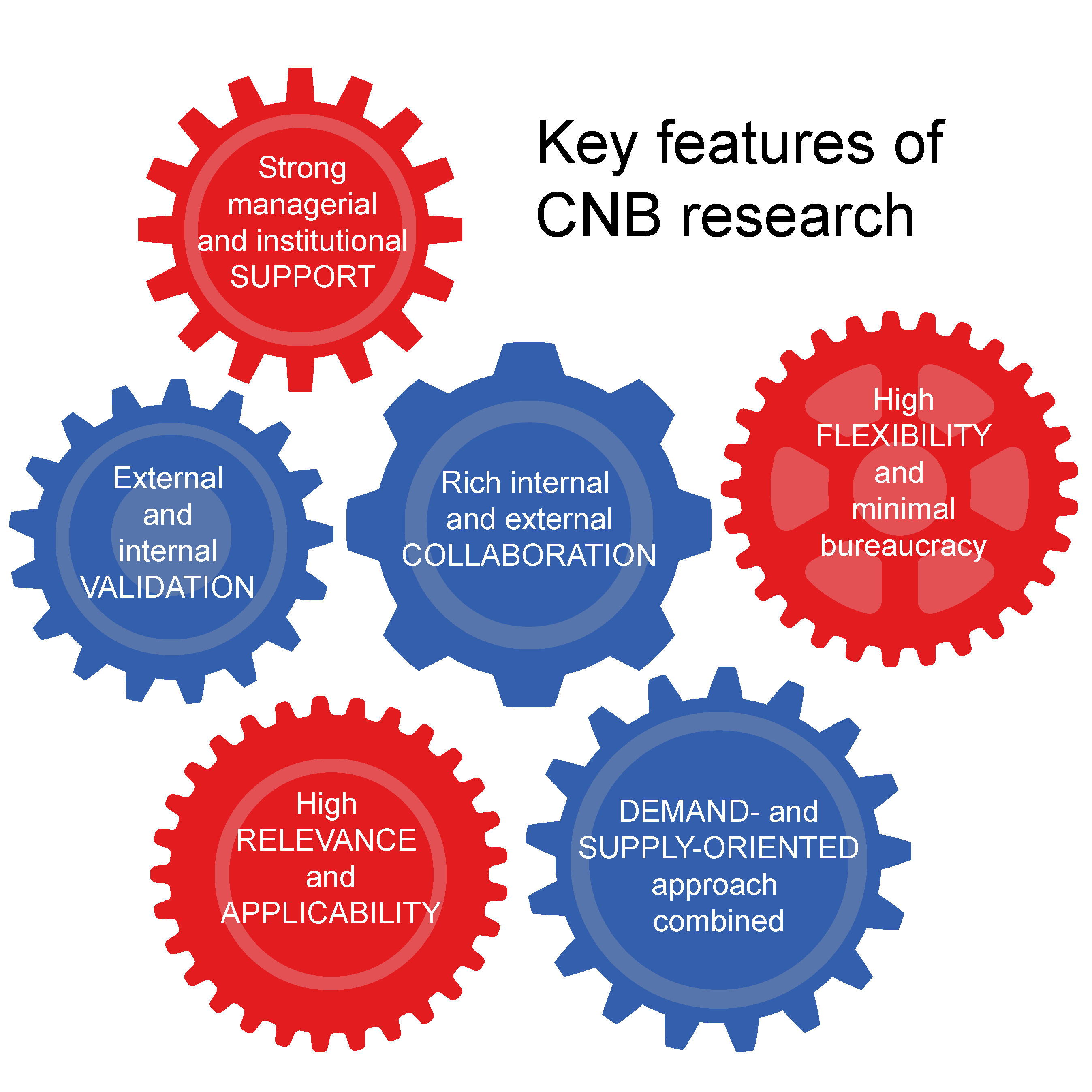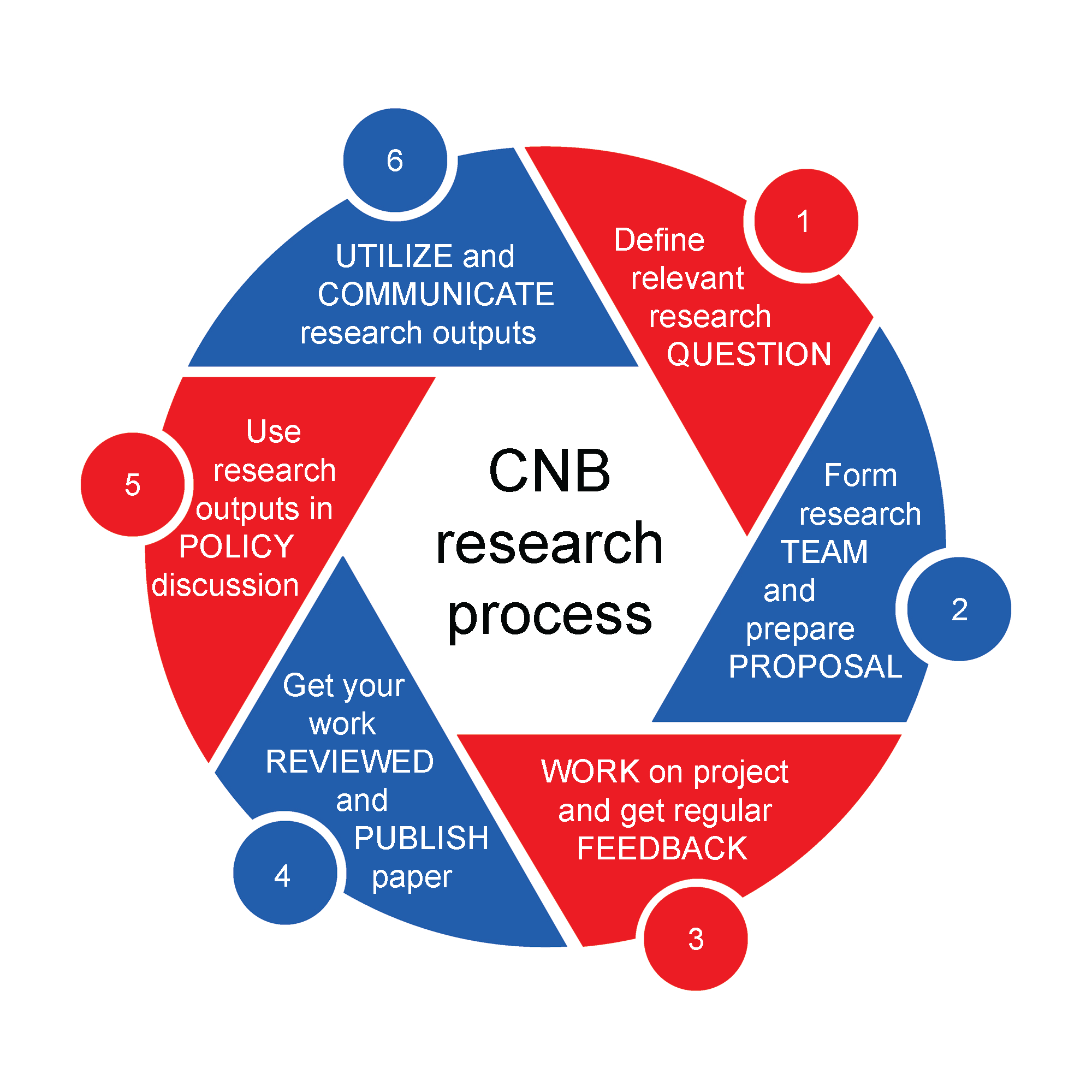How to Organize Research in Central Banks: The Czech National Bank’s Experience
Research at the Czech National Bank (CNB) has undergone significant changes since 2017. The main purpose of the changes was to bring the research closer to the CNB’s core activities, i.e. to increase substantially the share of applied research while maintaining its high quality. Looking back, the changes implemented can be assessed as successful. The research and its project management have become an integral part of the development of various analytical and forecasting tools at the CNB, and research outcomes are regularly used as inputs in discussions about the central bank’s policies. The new research model has helped significantly increase the flexibility of the whole process, strengthen the demand-side orientation and improve overall project management. On top of that, research outputs are regularly used in the CNB’s communications with the wider economic community. As one of those who designed the new research model and implemented it into practice, I describe the whole process and its benefits in a new CNB paper and summarize the main points in this blog post.
Published in the CNB Research and Policy Notes No. 1/2020
As a result of a weakened link between research outputs and their relevance and application, the CNB Board decided to initiate a change in the organizational structure and the research model. In January 2017, the Economic Research Department was therefore divided into two divisions, one integrated into the Monetary Department and the other into the Financial Stability Department. The purpose was to bring the research closer to the CNB’s core activities which would most benefit from its outputs and to increase the applied research stemming from the needs of these departments. As part of this change, a new research model was proposed in autumn 2017 which reflects managerial demand and limits the previous model’s shortcomings but maintains its positive aspects (for more details on the previous research model, see the paper).
The new research model has helped to
- significantly increase the flexibility of the whole research process, reduce the administrative burden and shorten the time between formulating the research question, starting the research project and delivering the required output,
- manage resources more effectively,
- make the research more demand-oriented,
- encourage and strengthen cooperation between researchers and experts at the CNB,
- foster regular presentation of interim results during division meetings, working group discussions and seminars and in the CNB’s core publications.

In a broader view, the research process can be divided into six stages. The first four characterize the steps from formulating research questions to finalizing the research publication, and the remaining two focus on the use of research outcomes in discussions about the central bank’s policies and in the CNB’s communications with the economic community. One significant advantage of the process is its structured project approach, with feedback provided at various stages of the project.

In the first stage, the list of specific research questions is updated and supplemented with new topics. This update takes place at least once a year after discussions with experts, researchers and management of the bank. Inputs and validation by management help maintain the high relevance of the topics covered, while inputs from experts make it possible to assess feasibility, maintain top expertise and motivate these experts to participate in research projects. Besides collaboration with experts in the CNB, the participation of external researchers and experts from other central banks and from academia is encouraged too.
In the second stage, a research team is formed and a short proposal is prepared. Research proposals should reflect the list of questions identified; however, this list should not be strictly limiting. If a specific research question that has a clear benefit to the department’s activities is not mentioned on the list, it may be given priority. This fosters greater flexibility, i.e. an ability to respond quickly to current issues. The proposal should have the form of a short summary of the main hypotheses and possible methodological approaches, and should thus be a basis for discussion and feedback at the initial stage of the project. It can be submitted at any time during the year and is subject to approval by the heads of the relevant departments.
In the third stage, the research project itself is worked on and the research team gets regular feedback. Each project is assigned a research coordinator, who is responsible for providing feedback on interim results and organizing internal seminars and consultations and after that also the peer-review process for the project outcomes. The project output is a research paper.
Once the manuscript is finalized, it is submitted into the peer-review process. The peer-review process at the CNB is comparable with that at high-quality scientific journals. The manuscript is sent to at least two reviewers – one a CNB expert and the other from a foreign central bank or supervisory institution or from academia. A committee consisting of the research coordinator, at least one reviewer and the director of the department to which the research project thematically belongs, decides on whether to accept or reject the manuscript for publication and on changes which have to be incorporated. The research team must be capable of defending its findings before the committee and answering the questions of the reviewers and others present at the review seminar, which is open to all CNB staff. After the manuscript has been accepted by the committee and the comments have been incorporated, the final paper is published in one of the CNB’s research series – the Working Paper Series or the Research and Policy Note Series.
An emphasis is placed on communicating research outputs in a simple non-technical form both within the CNB and to the wider economic community. Research outcomes are communicated to an increasing extent via blog posts, boxes in key CNB publications and short thematic articles, in internal policy documents and opinions, at conferences, seminars and meetings with experts, in submissions to scientific journals, and others. Communication of research outputs in a simple non-technical form should contribute to a better understanding of some of the CNB’s complex areas of work.
Although the new research model has generated improvements in a number of areas, it continues to face some challenges. These include, for example, delays with projects involving experts from “non-research” divisions. While cooperation between researchers and experts is strongly supported, there is no clear separation of the time devoted to research and the expert’s usual activities. Priority is usually given to non-research tasks, which can sometimes lead to substantial delays with work on the research project. Another challenge the research at the CNB is facing is designing a suitable career path for researchers who are not interested in joining management. Creating such a career development plan could help the institution to retain its best senior researchers with high professional knowledge. Addressing these and some other challenges should be the next step in the evolution of the CNB’s research model.
Finally, I should mention that the paper describes the experience of only one small-country central bank. However, I believe it may provide useful guidance for central banks which are facing similar issues as we did, although each central bank will need to tailor the solution to its specific needs.